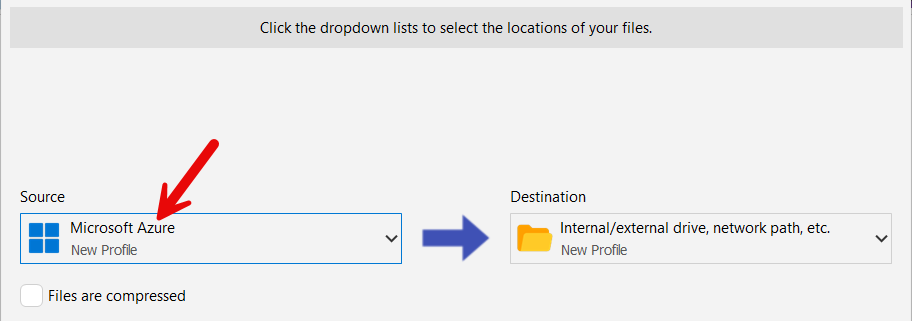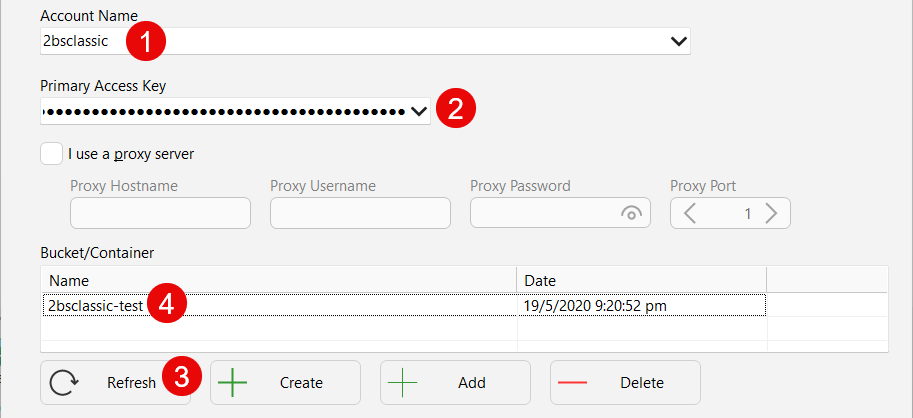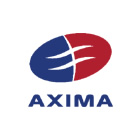
How to Backup Azure Blob Storage with SyncBackPro – A Complete Guide
Author: Michael J. Leaver, 2BrightSparks Pte. Ltd.
Microsoft Azure Blob Storage operates as one of several cloud services for unstructured data storage, but users need to perform regular backups because any cloud storage solution (including Amazon S3) requires this practice. The absence of backup procedures leads to permanent data loss when users experience accidental deletions, malware attacks or data corruption.
This guide demonstrates how to backup Azure Blob Storage using SyncBackPro, a flexible and secure backup tool used by professionals and businesses worldwide.
Why You Need to Backup Azure Blob Storage
Numerous users believe Microsoft Azure provides complete backup protection. The Azure system functions under a shared responsibility model. Microsoft provides infrastructure security but you must protect your data as the responsible party. SyncBackPro gives users complete control over their data, including offsite backups, versioning, and stress-free restoration.
What is SyncBackPro?
SyncBackPro functions as a powerful backup and synchronization tool which supports backup operations for Azure Blob Storage and additional major cloud platforms including Amazon S3 and Dropbox and Google Drive.
SyncBackPro enables users to automate Azure Blob Storage backup operations while allowing them to schedule tasks and encrypt files with AES and compress data for easy restoration from local or cloud storage locations. You can backup to or from Azure Blob Storage or synchronize files with it.
Step-by-Step: Backup Azure Blob Storage Using SyncBackPro
Step 1: Download and install SyncBackPro. Open the application. You can evaluate SyncBackPro for 30 days without any purchase.
Step 2: Create a new profile. When SyncBackPro is first run, click the New button (or press Ctrl-N) to create a new backup or synchronization profile. Choose Backup for a one-way copy from Azure Blob Storage to your local destination.
Step 3: Set your source to be Azure and your destination to local or remote storage, e.g. a NAS drive.

Step 4: Enter your Account Name and Primary Access Key. These are the credentials for SyncBackPro to connect to your Azure storage account. You can find your credentials in the Azure portal under your Security + Networking → Access keys. It is possible to use private Azure endpoints. Also, SyncBackPro also supports Shared Access Signature (SAS) URL's which include all the required information to connect to a container (in this case just enter the URL). Click Refresh and select the container. Finally, click Done to create the profile.

Step 5: You can now choose the path to backup in Azure (Source) and also where to backup the files to (Destination). Many other options are also available, e.g. filtering, encryption, compression, scheduling, etc.
Step 6: Perform a simulated run. This lets you check everything is working without copying, deleting or modifying any files.
Best Practices for Azure Backups with SyncBackPro
- Use versioning to retain historical backups.
- Enable encryption and/or compression.
- Schedule the backups.
- Test that you can restore.
- See our Backup Checklist for more suggestions.
- We also have an article on Optimizing Cloud Backups.
Conclusion
Azure Blob Storage does not back up. It's on you to keep your data safe. With SyncBackPro, you can create secure, automated backups of your Azure data with minimal effort and maximum convenience.
Frequently Asked Questions
Does Azure automatically backup my Blob Storage data?
No. Azure has redundancy and replication but it is not a backup. You need to make backups.
Can I schedule automatic backups from Azure Blob Storage using SyncBackPro?
Yes, SyncBackPro has scheduled backup capabilities at any frequency you need.
Can I copy Azure Blob Storage to a local drive?
Yes, SyncBackPro does allow you to backup Azure Blob Storage to any external, network, or local drive.
Does SyncBackPro offer incremental backup capability for Azure?
Yes, it only copies new or changed files on subsequent runs after the initial run, saving you time and bandwidth.
Is encryption supported when backing up Azure data with SyncBackPro?
SyncBackPro can store backup files on Azure using encryption.
Noted Customers
© 2003-2025 2BrightSparks Pte. Ltd. | Home | Support | Privacy | Terms | Affiliate Program















